The helicopters whirred overhead as night fell in Minneapolis. At 7pm millions of phones across the district pinged with an emergency alert. “CURFEW IN EFFECT from 7pm to 6am. Stay home, stay safe,” flashed across screens.
But just north of the city, many chose not to heed the warning. Instead, they remained on the streets, embracing their right to protest, as heavily armed police and national guard troops looked on in riot gear.
Almost 11 months after the death of George Floyd on a curbside in southern Minneapolis shocked the nation and the world, Minneapolis once again finds itself at the centre of a national reckoning about racial injustice and police reform in America.
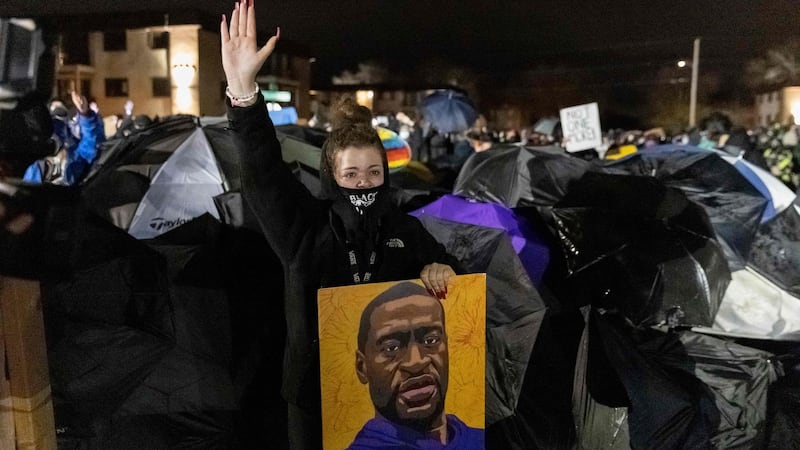
The city was already on edge as the trial of Derek Chauvin began late last month. A verdict in the case of the policeman who knelt on Floyd's neck for almost nine minutes as he died may be reached this week.
Last Sunday, the city’s troubles were compounded when 20-year-old Daunte Wright was shot and killed. The father of one was driving with his girlfriend when he was stopped by three police officers. The license plates on his vehicle had expired – a common problem in Minnesota and many other states where vehicle registrations must be renewed frequently. Covid-19 restrictions had also added to a backlog of renewals.
'Taser, taser, taser,' she shouts and shoots. The car speeds away; then a pause. 'Holy s**t. I shot him,' can be heard
Officers then noticed an air freshener hanging from the rearview mirror of the car – technically an infraction in Minnesota. Wright’s mother said that Daunte phoned her at that moment, panicked.
As Wright got out of the car, the officers ran a check and found there was a warrant outstanding for his arrest over a missed court appearance. What happened next played out for the world on 30 seconds of distressing bodycam footage. Wright tries to escape the handcuffs and gets back into the car; a police officer draws a gun. “Taser, taser, taser,” she shouts and shoots. The car speeds away; then a pause. “Holy s**t. I shot him,” can be heard.
It emerges that Wright, fatally injured, drove on a short distance and hit another car. He was found dead at the scene.
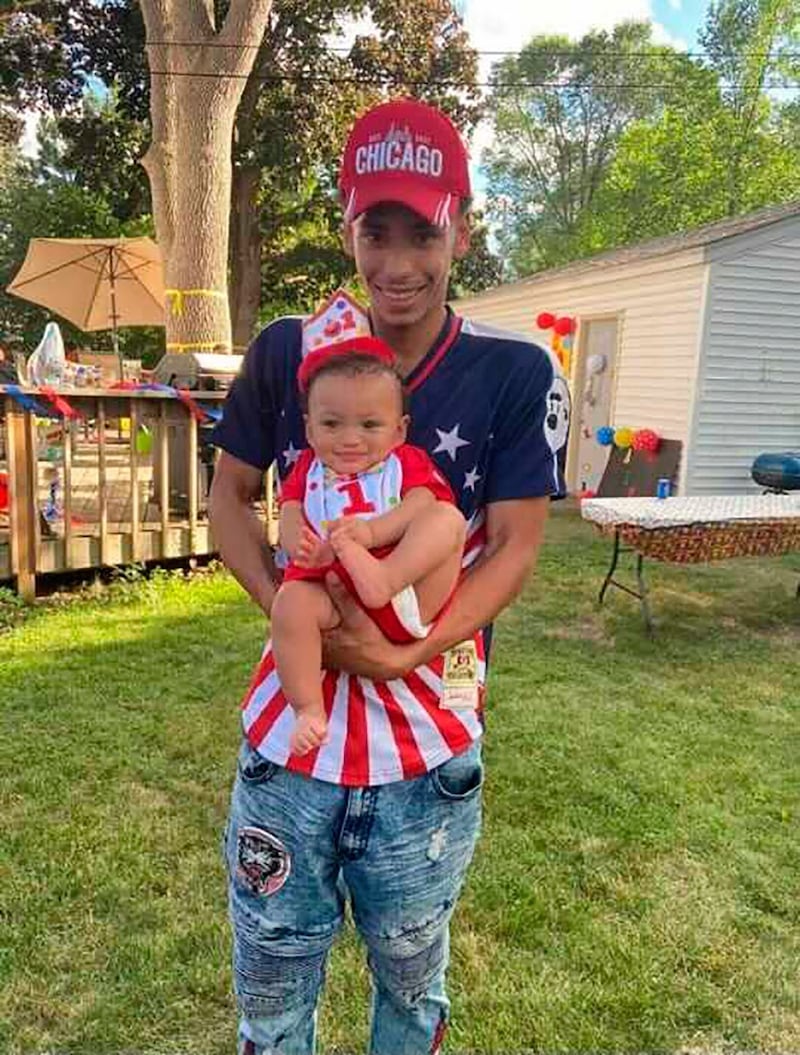

The death of another black man at the hands of police has pushed an already tense city further to the brink. Ben Crump, the civil rights attorney representing Floyd’s family and now the family of Wright, spoke of his disbelief at the confluence of events as he stood outside the Hennepin County courthouse this week as the Chauvin trial played out inside.
Flanked by Floyd’s family, he said: “It is unbelievable, it is just something I cannot fathom . . . if ever there was a time when no one in America should be killed by police it was during this trial.”
He had assumed that “the police would be on their best behaviour, that they would exercise their greatest standard of care, that they would concentrate on de-escalation in a way that they have never concentrated in America.” Instead, Wright lost his life like many African-American men before him. His crime according to Crump? “Driving while black.”
As the country awaits the verdict in the Floyd trial, thoughts are once again turning to how America finds itself on the cusp of another national conversation about race, more than 150 years after a civil war that was supposed to put the issue of slavery and discrimination to rest.
The phenomenon of white flight, whereby white residents fled to the suburbs as black people arrived, exacerbated deep racial disparities
In many ways, the city of Minneapolis encapsulates America’s continuing battle with racial injustice. Located some 600km northwest of Chicago, a few hours’ drive from the Canadian border, Minneapolis is the biggest urban centre in the state of Minnesota. Known for its bitterly cold winters, it is situated across the Mississippi river from Saint Paul, a unique coupling known colloquially as the Twin Cities.
Like many northern cities, including Detroit and Chicago, Minneapolis experienced an influx of African-Americans from the south between the 1920s and the 1970s, a phenomenon known as the Great Migration. Many settled in areas already occupied by black communities in the south side of the city. But segregation in housing soon set in. The phenomenon of white flight, whereby white residents fled to the suburbs as black people arrived, exacerbated deep racial disparities. The impact can be felt to this day, as captured in Matthew Desmond’s masterful account of Minneapolis’ housing crisis in his Pulitzer Prize-winning book, Evicted.
In more recent years the midwestern city has been home to a vibrant Somali population. Congresswoman Ilhan Omar, who relocated with her family from a Somali refugee camp to the US aged 12, represents the district in Congress. Urban regeneration has breathed new life into the downtown area in recent years, with breweries, restaurants and cultural sites springing up. The Twin Cities area leans heavily Democrat, though the rest of the state is historically very Republican.
It was here that Floyd relocated from his native Houston six years before his death. He moved to the city in search of a new start, having served some years in prison for a robbery in 2007. He was working as a bouncer at a local restaurant and was known in local music circles when he met his death on May 25th last year.
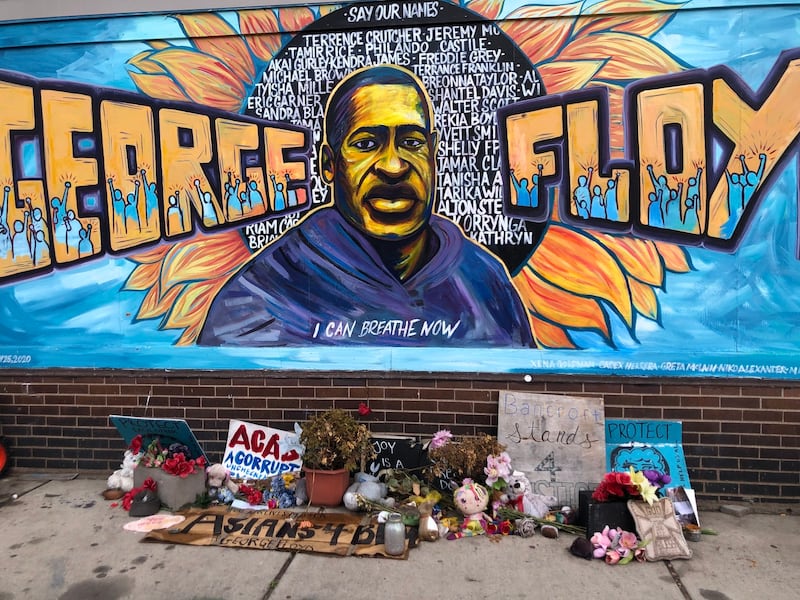
The circumstances of that afternoon are currently under scrutiny in the trial playing out at the Hennepin County courthouse. What is known is that a shop assistant phoned police because Floyd tried to use a forged $20 bill. Police arrived and pulled Floyd out of his car at gunpoint. As they struggled to get him into the police car they arrested him on the pavement. Video shows officer Chauvin handcuffing him face down, and pressing his knee into his neck until he lost consciousness. “I can’t breathe” were among Floyd’s final words before he died.
Here on the corner of 38th Street and Chicago Avenue, about 7km south of the city centre, flowers and photographs cover the area where Floyd was pinned down by Chauvin. At the centre is a sculpture of a raised fist, surrounded by flowers and a picture of Floyd. Wall murals and pavement art mark the site where he lost his life. Photographs of other African-Americans killed by police – Breonna Taylor, Philando Castile – adorn the site, their names a pantheon to lost American lives.
Cup Foods, the grocery store where Floyd tried to use the $20 bill, is doing a steady trade. Many of the customers are members of the national and international media who have descended on the city for the trial. Outside, people take photographs or walk around the make-shift shrine, reading messages. The junction has been renamed George Floyd Square and the surrounding streets have been blocked to traffic.
Not all locals are happy about their neighbourhood's new-found notoriety. Nica Baker, who lives nearby, worries that the area is becoming ghettoised. "My daughter now has to walk five blocks to catch a bus to school that used to stop here," she explains, pointing to a bus stop covered with momentoes to Floyd. "I know that people want to pay homage, respect to their brother, but at night this is a no-go area. Drugs, people sleeping rough. It needs to get back to normal."

A few miles north, the trial of Chauvin is playing out in central Minneapolis. Covid-19 restrictions mean that only 33 people are allowed inside the courtroom on the 18th floor each day. The building, like many of the shops and offices in the area, is heavily fortified and under tight security. Jurors are brought into the courtroom each morning through a private entrance, under heavy security.
This week, as the rain turned to snow, and a bracing wind blew in from the north, reporters continued to camp out in front of the building. With closing arguments expected to begin on Monday, a result could be known as early as next week.
In many ways, America's police system is itself on trial in Minneapolis
Chauvin is facing charges of second-degree unintentional murder, third-degree murder and second-degree manslaughter. He denies the charges against him. A unanimous verdict from all 12 jurors is required to convict on any charge, but the defence team only needs one juror to believe that Chauvin is innocent.
While the high-profile trial is being seen as a watershed moment in the history of race relations in this country, it has also renewed focus on America’s criminal justice system.
Floyd was one of millions of black men who have served prison sentences in the US. While America has the highest incarceration rate in the world, young African-American men are disproportionately more likely to spend time behind bars. As academic Michelle Alexander has shown, black men have been admitted to prison on drug charges at rates 20 to 50 times greater than white men in some states. Many blame the 1994 crime Bill introduced during the Clinton administration, which cracked down on crime and ultimately led to a period of mass incarceration in America.
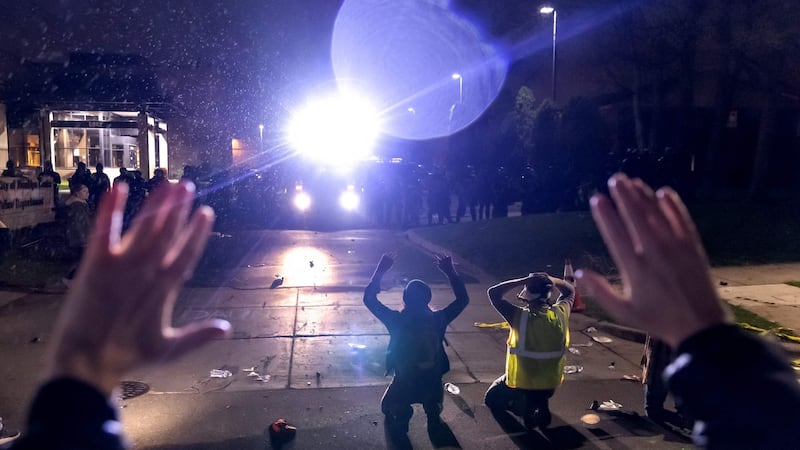
But the specificities of the Floyd and Wright cases also shine a light on policing. In many ways, America's police system is itself on trial in Minneapolis. The killing of Floyd was not just about one unarmed black man who was at the wrong place at the wrong time; it is about an apparently relentless pattern of police misconduct in America. From the Rodney King police brutality case 30 years ago, when Los Angeles police officers were acquitted of the savage beating of a black man; to the case of Michael Brown, a black teenager shot by a white policeman in Ferguson, Missouri, in 2014, the issue of systemic racism in America's policing system has again reared its head.
Floyd's death focused attention on the way in which police forces operate across the country. Local authorities have significant power over policing, and Minneapolis is no different. Chauvin was a member of the Minneapolis police force, while Kim Potter, who shot Wright a few miles north, is part of the separate Brooklyn Center police force.
Following the national protests about race last summer, calls to “defund the police” reverberated across the country. Though the Minneapolis city council voted to disband the police department, ultimately the idea was quietly abandoned.
While Minneapolis faces a second high-profile police trial – Potter has been charged with second-degree manslaughter – successful prosecutions of police officers are extremely rare in the US. While more than 200 people have died in Minnesota alone in encounters with police in recent decades, only one officer has been convicted of an on-duty killing in the state.
Though several former police officers have testified against Chauvin in his murder trial, many fear that the so-called “blue wall of silence” among rank-and-file officers remains strong. Chauvin’s legal defence is being backed by a $1 million fund from Minneapolis’ largest police union.
Potter is a former president of Brooklyn Center’s main police union. Earlier this week, a “blue line” flag was displayed outside the Brooklyn Center police headquarters – a symbol that many see as a defiant snub to the racial justice movement.
As the Chauvin trial continued for a third week this week, the Brooklyn Center police station became the new focal point for protest. Hundreds gathered in the area each evening. Many defied the nightly curfew, prompting a heavy-handed response from lines of armed police officers and national guard troops in riot gear who launched tear gas and flash grenades to disperse those who remained.
'As a white person, part of my white privilege was me not realising how bad it was, because I didn't have to'
Some protesters hurled objects across police lines. Others knelt on the ground or held their arms high above their heads in silence.
Octavia Kimble says that the killing of Wright shocked her and her family. "My brother is just a few years older than him. It could have been him," she says, tears in her eyes.
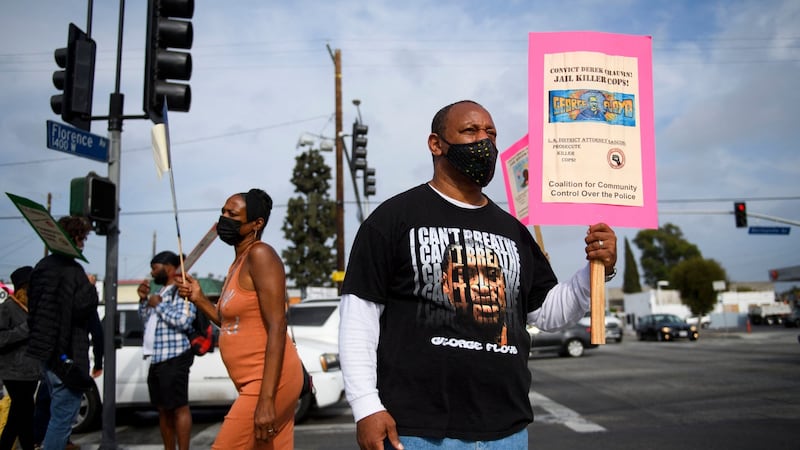
Rachel Kite, also 22, explains why she has come out to protest. "We're here for justice, we're demanding justice, and if we don't get it, our city is not going to know peace." She said that racism has always been a problem in Minneapolis, but the Floyd killing opened people's eyes.
“As a white person, part of my white privilege was me not realising how bad it was, because I didn’t have to,” she says. “Now that I’ve been made aware of it and realise how dangerous it is to be black in America, I’m out here using my privilege in any way I can to fight for those rights and for those people.”
Though many of the demonstrators are black, people from across the community have taken to the streets this week.
Members of the Bikers Riding Against Police Brutality group were helping direct traffic on Wednesday night. Adam, who is white and a grandfather, explained that he and others from the greater Twin Cities area formed the group after the death of Floyd as they were so horrified at what had unfolded. “It’s a way for us to show our support.”
As the protests continued nightly this week in this Minneapolis suburb, many businesses were boarding up their windows, braced for what might lie ahead next week.
As America awaits a verdict in the Floyd trial, the coming days and weeks could have profound implications for the future of policing and race relations in the US.
* This article was edited on April 17th, 2021



















